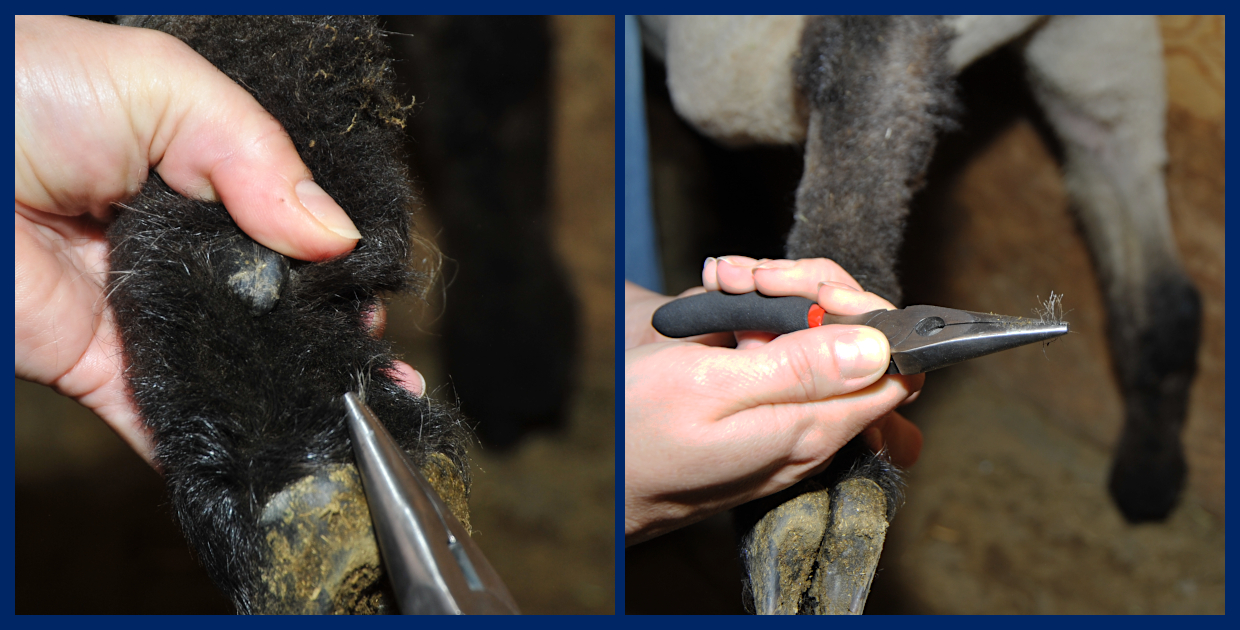Quick Summary
Click here for Price and Turnaround Time
A DNA profile of species-specific microsatellite markers is obtained from the offspring, potential dam, and potential sire(s), and parentage analysis is performed using this data. In this process, a computer program compares the DNA profile of the offspring to the profiles of the presumed parents. Candidate sires and dams may either qualify or be excluded as parents based on whether they share microsatellite marker alleles with the offspring. A parentage analyst then reviews the results and sends the final report. If a listed parent or parents are excluded, additional analysis is performed, including retesting of samples and the possible use of additional DNA markers to confirm the exclusion.
You can read more about the process of DNA parentage analysis HERE.
Sample Collection
Most of the sheep DNA tests offered by the VGL are carried out using cells from the roots of a hair sample (roughly 20-40 hairs).
Hair samples should be coarse hair from hoof or body areas.
Instructions

1. Clean (use comb if possible) by removing all loose hair and foreign matter.
2. Use fingers or pliers to grasp approximately 8-10 hairs close to the skin and pull. Pull (do NOT cut) hair strands. Examine the end of hair strands for presence of root bulbs. Hair roots are necessary for DNA testing. If the majority of hair strands lack the root bulbs, discard hair and start again.
3. Repeat until you have approximately 20-40 hairs with root follicles attached.
4. Place the 20-40 hairs with root follicles attached in the envelope and seal with the animal’s ID written on the envelope.
5. Repeat steps 1-4 for each additional animal being sampled.
Note:
- Hair should be dry.
- If hair has excess dirt and debris, please brush out if possible before pulling hairs for sample.
- Do not cut the hair! The roots contain the DNA for testing.
- When sampling several animals in the same session, make sure that there are no hair strands in your hands to reduce the possibility of sample contamination. Clean hands and/or pliers if possible.
In sheep, the following microsatellite markers are reported:
OarCP49
INRA005
MAF65
SPS113
McM527
D5S2
INRA023
OarFCB11
OarAE129
OarFCB304
INRA063
MAF214
CSRD247
HSC
OarFCB20

 Parentage/Genetic Marker Report
Parentage/Genetic Marker Report